In a world increasingly conscious of the environmental footprint left by travel, sustainable island getaways offer a harmonious balance between indulging in the beauty of paradise and preserving it for future generations. These destinations across the globe highlight eco-consciousness, where luxury coexists with sustainability. From the Maldives’ renewable energy-powered resorts to the Caribbean’s conservation-focused islands, sustainable island getaways are redefining what it means to vacation in paradise. This guide explores ten such destinations, each committed to protecting their natural beauty while providing an unforgettable experience for visitors. Here, responsible travel practices and luxury blend seamlessly, allowing you to explore paradise responsibly.
1. The Maldives
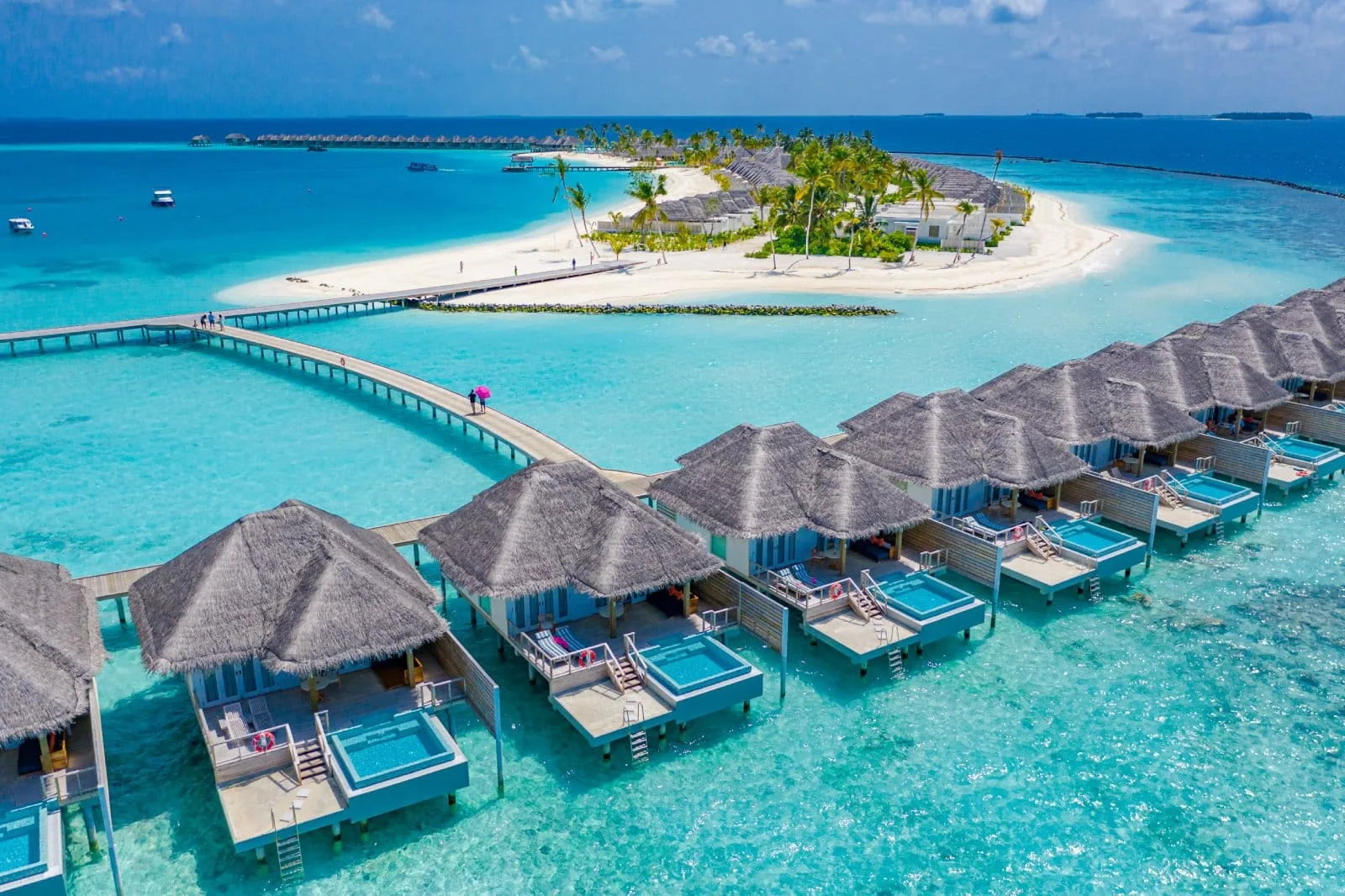
The Maldives, a tropical paradise in the Indian Ocean, is renowned for its crystal-clear waters, vibrant coral reefs, and luxurious overwater bungalows. Amidst its natural beauty, the Maldives is also a leader in sustainable tourism, with many resorts utilizing solar energy, water conservation systems, and coral reef restoration projects. These initiatives ensure that visitors can enjoy the islands’ splendor while contributing to their preservation. Activities like snorkeling, diving, and marine life excursions offer intimate encounters with the underwater world, emphasizing the importance of marine conservation.
Insider’s Tip: Choose a resort actively involved in coral reef restoration, offering educational tours or participating in conservation efforts.
When to Travel: The best time to visit is from November to April, during the dry season, when the weather is ideal for underwater and beach activities.
How to Get There: International flights arrive at Velana International Airport in Malé, from where seaplanes or boats transport visitors to their respective islands.
2. Palawan, Philippines

Image Credit: Shutterstock / R.M. Nunes
Palawan, an archipelagic province in the Philippines, is a haven of biodiversity, with lush jungles, towering limestone cliffs, and pristine beaches. Recognized for its commitment to eco-tourism, Palawan offers a range of sustainable travel experiences, from community-based tours to eco-friendly accommodations nestled in nature. The island’s efforts to preserve its natural landscapes and support local communities make it an exemplary destination for responsible travelers. Exploring the underground river of Puerto Princesa, island-hopping in El Nido, and snorkeling in the coral gardens of Coron provide immersive experiences that highlight the importance of environmental stewardship.
Insider’s Tip: Engage with local conservation initiatives by participating in beach clean-ups or community-led environmental education programs.
When to Travel: The dry season from October to May is the best time to visit, offering sunny days and calm seas for exploration.
How to Get There: Direct flights to Puerto Princesa International Airport are available from Manila and Cebu. From Puerto Princesa, various transportation options can take you to other parts of Palawan.
3. Galápagos Islands, Ecuador
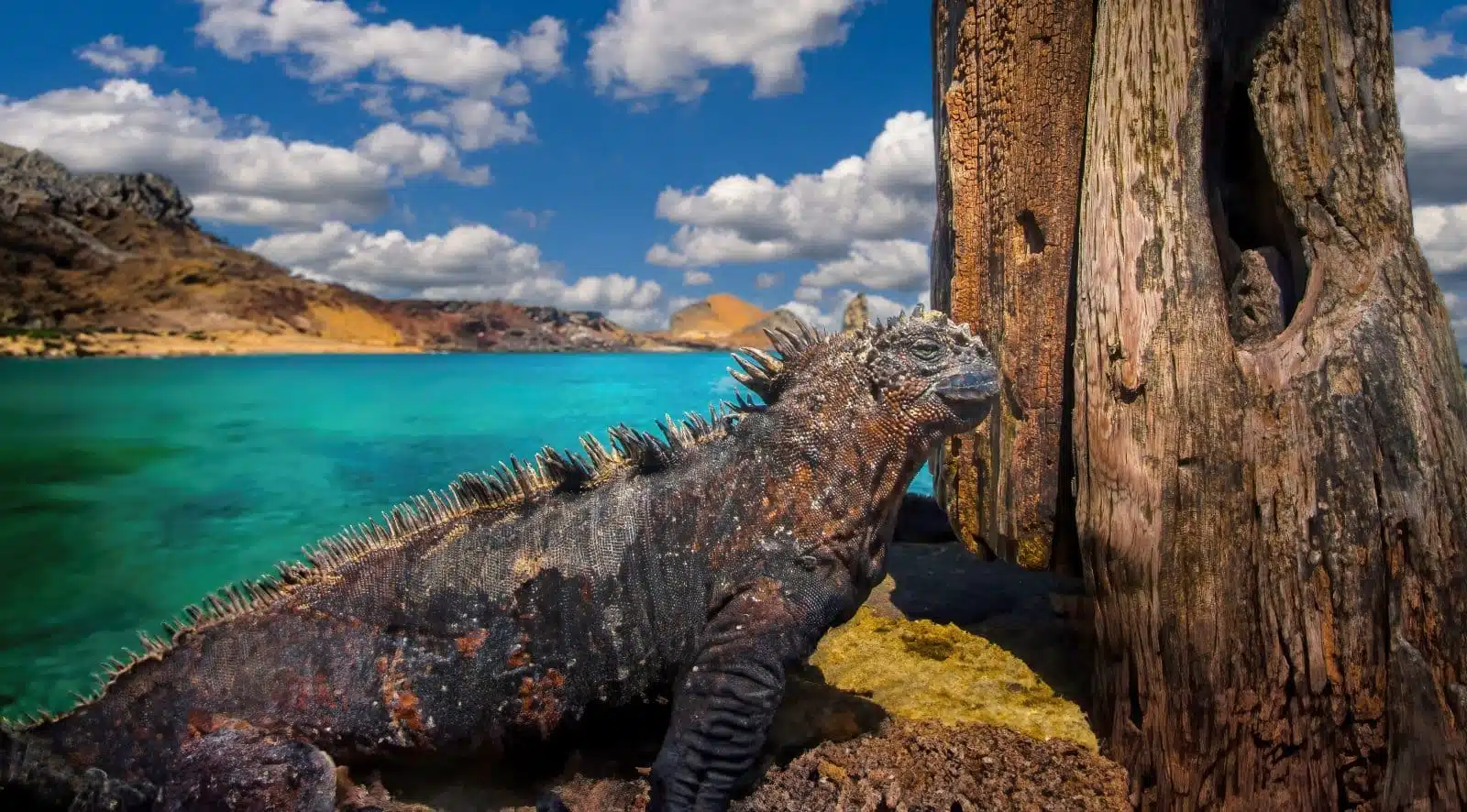
Image Credit: Shutterstock / FOTOGRIN
The Galápagos Islands, a volcanic archipelago in the Pacific Ocean, are a living museum of evolutionary changes, with a vast number of endemic species inspiring Charles Darwin’s theory of evolution. The islands’ approach to tourism is highly regulated, ensuring that visits have minimal impact on the delicate ecosystems. Eco-friendly cruises and accommodations, strict visitor guidelines, and conservation programs are part of the comprehensive efforts to preserve this unique destination. Encounters with giant tortoises, marine iguanas, and blue-footed boobies offer profound insights into the importance of conservation and the interconnectedness of Earth’s species.
Insider’s Tip: Opt for a certified eco-cruise that supports conservation efforts and offers educational insights into the islands’ unique ecosystems.
When to Travel: The cooler dry season from June to November is ideal for wildlife spotting, while the warmer wet season from December to May offers better conditions for snorkeling and diving.
How to Get There: Flights to the Galápagos Islands typically connect through Quito or Guayaquil in Ecuador, landing at either Baltra or San Cristóbal airports.
4. Seychelles
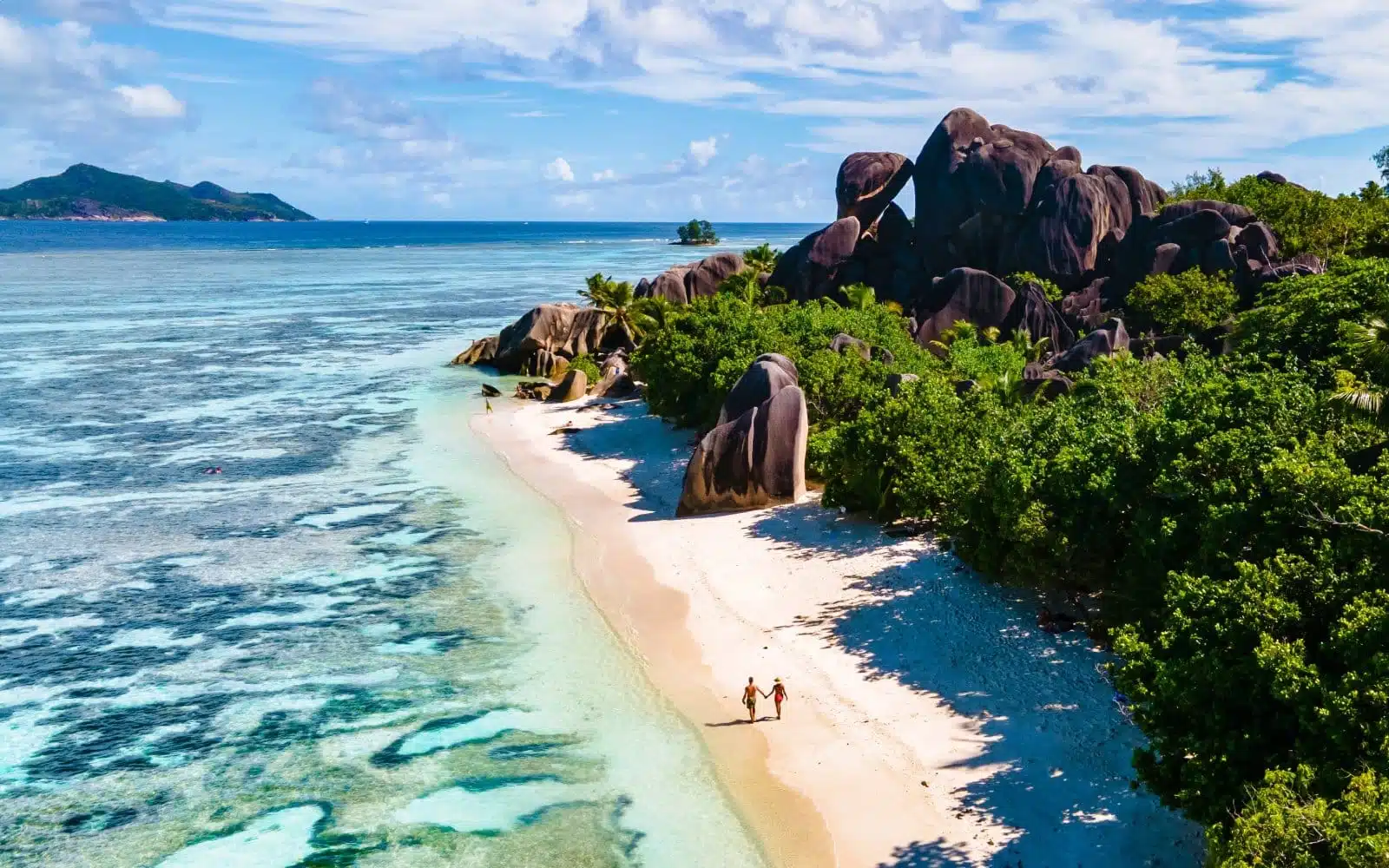
Image Credit: Shutterstock / fokke baarssen
The Seychelles, an archipelago of 115 islands in the Indian Ocean, is a pioneer in environmental conservation, dedicating a significant portion of its territory to nature reserves and marine parks. The islands’ commitment to sustainable tourism is evident in their eco-friendly resorts, marine conservation projects, and initiatives to protect endemic species. Seychelles offers a tranquil escape where visitors can enjoy white-sand beaches, crystal-clear waters, and lush tropical forests while supporting eco-conscious practices. Activities such as snorkeling in marine parks, hiking in the Vallée de Mai, and visiting the Aldabra Atoll emphasize the islands’ natural wonders and the critical need for protection.
Insider’s Tip: Participate in a guided eco-tour to learn about the Seychelles’ unique flora and fauna and the efforts to protect them.
When to Travel: The best times to visit are during the transition periods between the trade winds, from April to May and October to November, when the weather is calm and warm.
How to Get There: The Seychelles International Airport on Mahé is the main gateway, with direct flights from major cities in Europe, the Middle East, and Africa.
5. Dominica
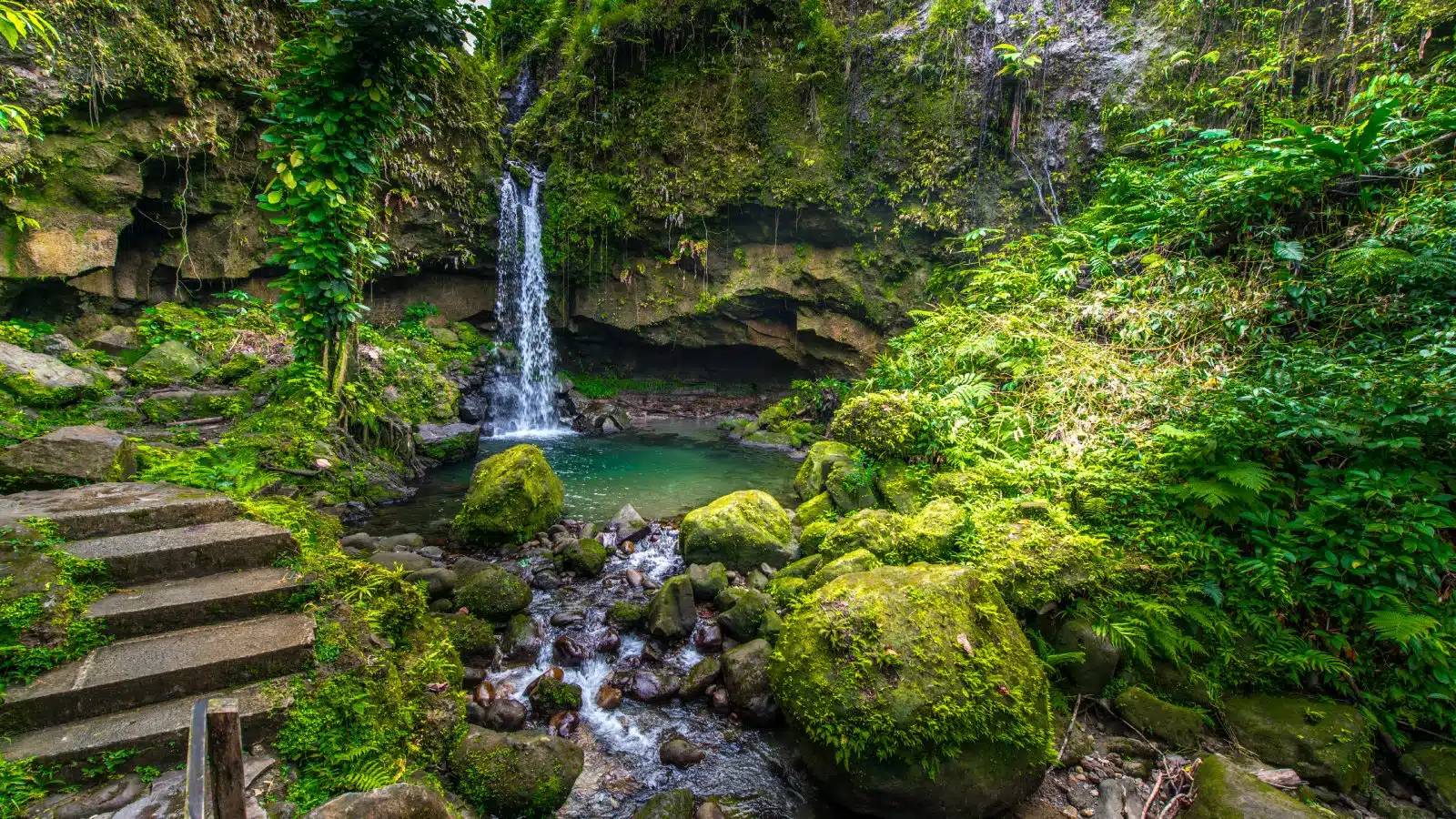
Image Credit: Shutterstock / haspil
Known as the “Nature Island,” Dominica stands out for its lush rainforests, abundant waterfalls, and hot springs, all part of a concerted effort to promote eco-tourism and sustainability. The island’s commitment to preserving its natural environment is matched by its development of renewable energy sources and community-based tourism initiatives. Visitors to Dominica can immerse themselves in nature by hiking the Waitukubuli National Trail, exploring the Morne Trois Pitons National Park, and snorkeling in Champagne Reef, all while supporting the island’s sustainable development goals.
Insider’s Tip: Stay in an eco-lodge using renewable energy and locally sourced materials to minimize your environmental impact.
When to Travel: The best time to visit is from December to April, during the drier months, ideal for hiking and outdoor exploration.
How to Get There: Dominica is accessible by air through Douglas-Charles Airport, with connections from major Caribbean hubs.
6. Maui, Hawaii
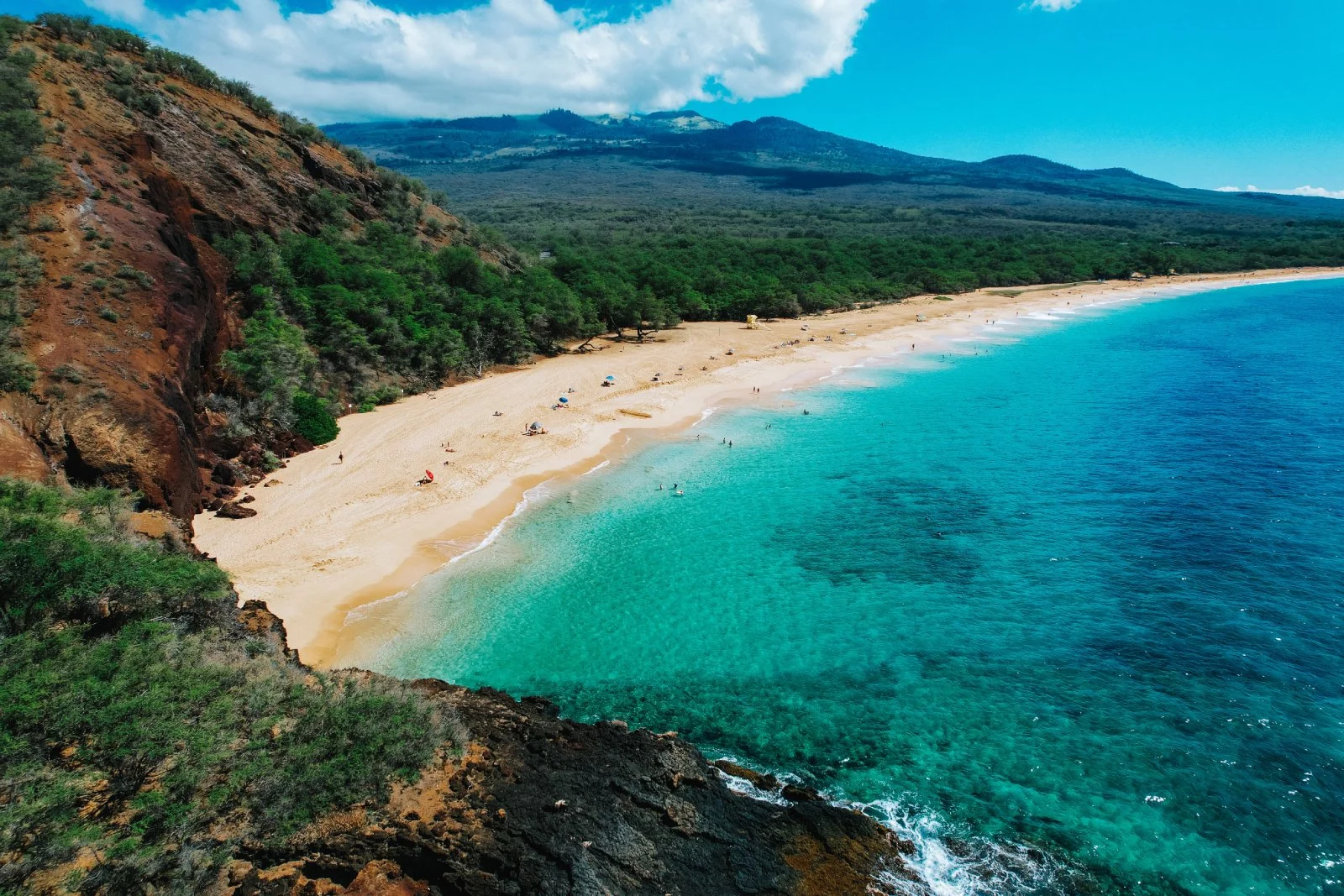
Image Credit: Shutterstock / Aspects and Angles
Maui, the second-largest of the Hawaiian islands, is celebrated for its stunning landscapes, from the summit of Haleakalā to the beaches of Wailea. The island’s dedication to sustainability is seen in its protection of natural resources, promoting local agriculture, and developing renewable energy. Maui’s diverse ecosystems and rich cultural heritage are accessible through eco-friendly tours and activities, including whale watching, farm-to-table dining experiences, and cultural walks. By choosing sustainable practices, visitors can enjoy Maui’s breathtaking beauty while contributing to the preservation of its environment and culture.
Insider’s Tip: Visit a local farm or participate in a farm-to-table cooking class to experience Maui’s commitment to sustainable agriculture and local produce.
When to Travel: The shoulder seasons of April to May and September to November offer pleasant weather and fewer tourists.
How to Get There: Kahului Airport is the main gateway to Maui, with direct flights from the continental U.S., Canada, and other Hawaiian islands.
7. Corsica, France

Image Credit: Shutterstock / Ondrej Prochazka
Corsica, a mountainous Mediterranean island, boasts a rugged landscape, pristine beaches, and dense forests, all protected under the island’s commitment to environmental preservation. The Corsican people’s dedication to sustainable living is evident in their promotion of local products, protection of natural sites, and development of eco-tourism. Visitors can explore the GR20, one of Europe’s most challenging hiking trails, relax on secluded beaches, and discover the island’s unique culture, all within a sustainability framework.
Insider’s Tip: Explore the island’s interior through guided eco-tours that offer insights into Corsica’s efforts to balance tourism with environmental protection.
When to Travel: Late spring (May to June) and early fall (September to October) are ideal for mild weather and outdoor activities.
How to Get There: Corsica is accessible by air, with airports in Ajaccio, Bastia, and Figari, or by ferry from mainland France and Italy.
8. Azores, Portugal
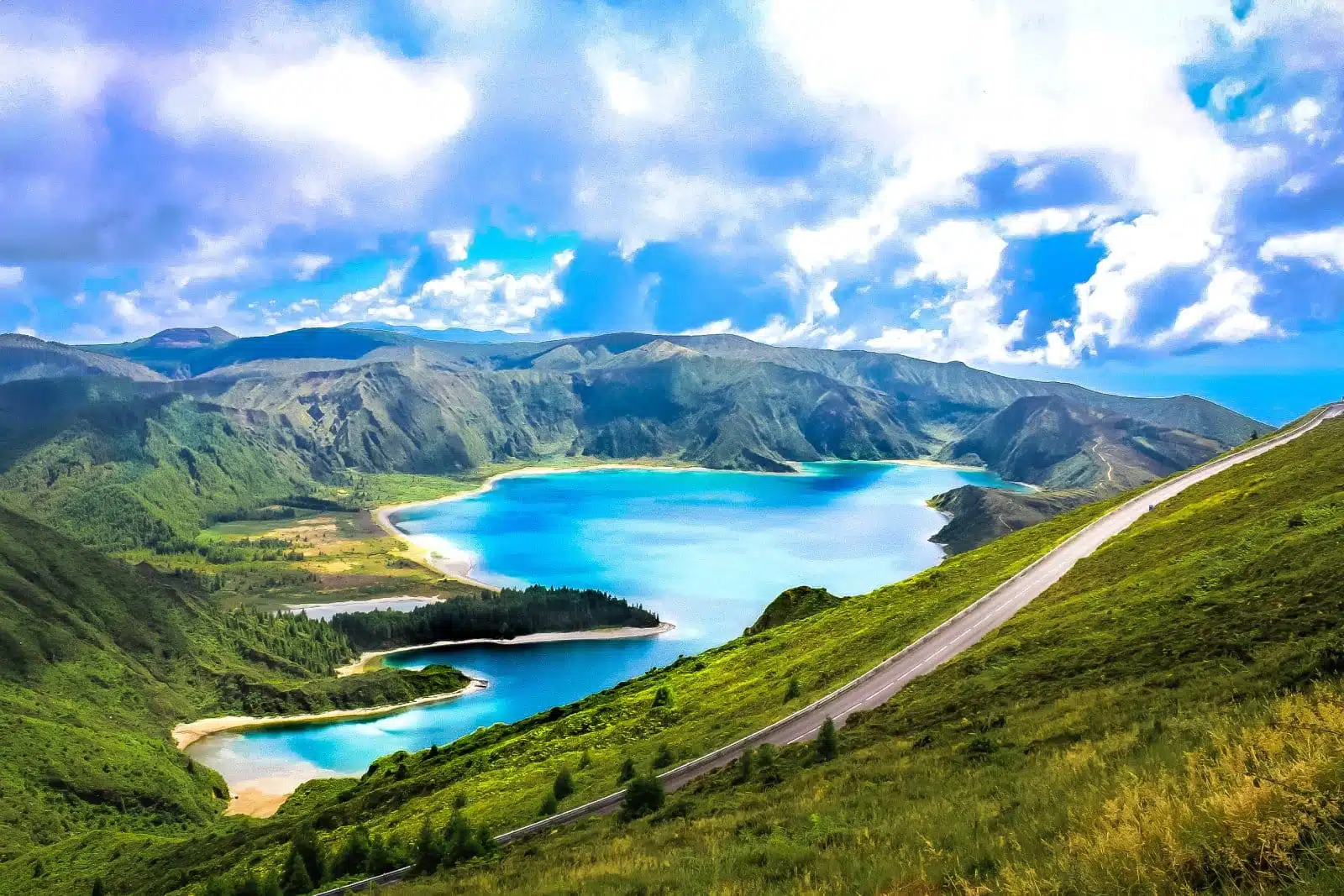
Image Credit: Shutterstock / Angelina Dobreva
The Azores, a group of nine volcanic islands in the mid-Atlantic, are a prime example of sustainable island living, with a strong emphasis on renewable energy, waste reduction, and marine conservation. The islands offer a wealth of eco-friendly activities, from whale watching and birding to hiking and thermal baths, set against a backdrop of dramatic landscapes and vibrant communities. The Azores’ commitment to sustainability ensures that its natural beauty and biodiversity are preserved for future generations to enjoy.
Insider’s Tip: Take part in a marine conservation tour to learn about the Azores’ efforts to protect its marine ecosystems and the species that inhabit them.
When to Travel: The best time to visit is from April to October, when the weather is warmer and drier, ideal for exploring the islands’ natural attractions.
How to Get There: São Miguel, the largest island, is served by João Paulo II Airport, with direct flights from Europe and North America. Inter-island flights and ferries connect the other islands.
9. Isle of Eigg, Scotland
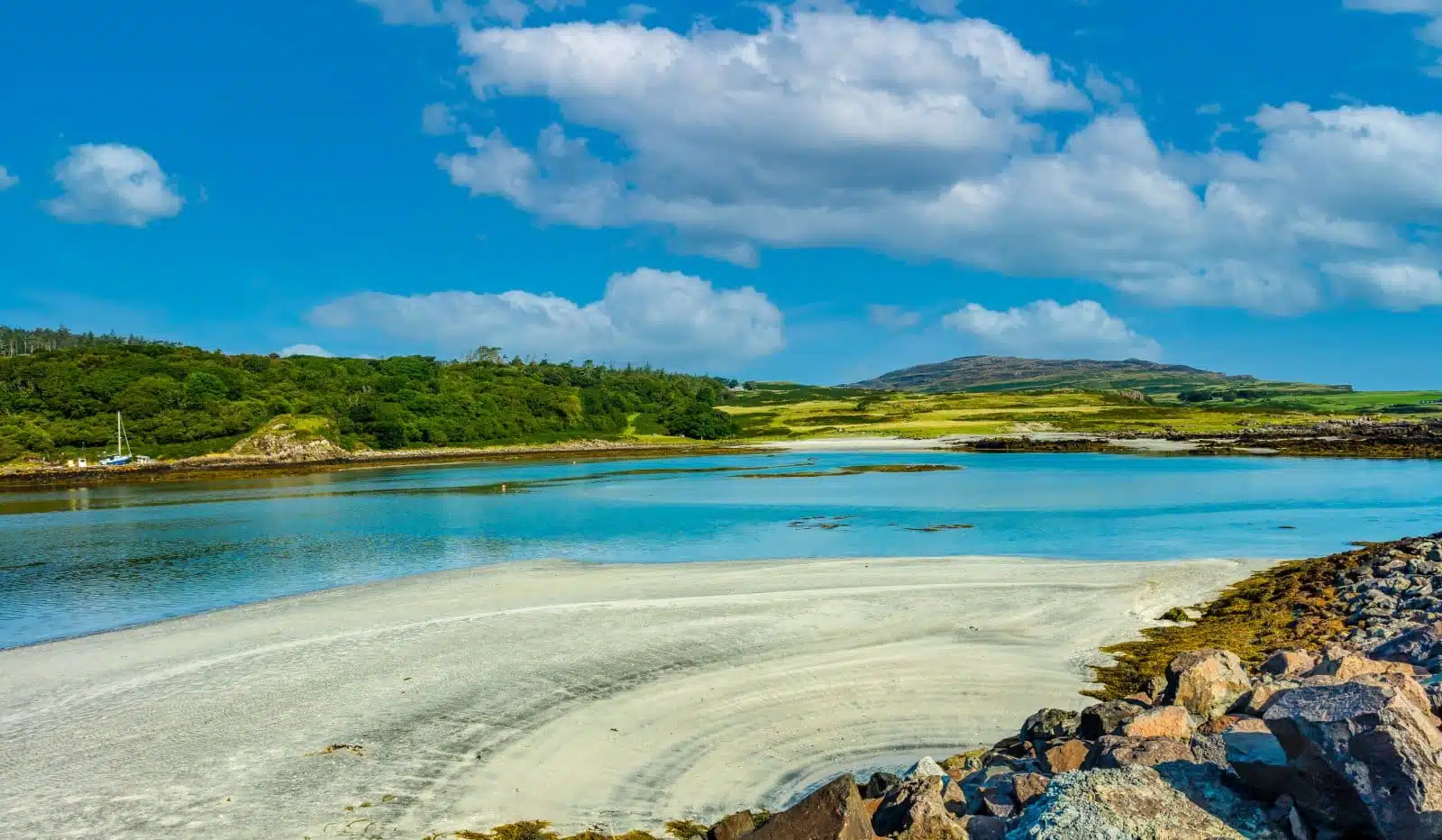
Image Credit: Shutterstock / Anne Coatesy
The Isle of Eigg, part of the Inner Hebrides, is a community-owned island known for its innovative approach to sustainable living and renewable energy. Eigg’s residents have created a self-sufficient community that relies on solar, wind, and hydropower, setting an example for renewable energy usage worldwide. The island’s natural beauty, including rugged cliffs, diverse wildlife, and historical sites, can be explored through a network of trails and guided tours emphasizing conservation and environmental respect.
Insider’s Tip: Engage with the local community by visiting the Eigg Heritage Centre to learn about the island’s history, culture, and sustainability efforts.
When to Travel: Summer (June to August) is the best time to visit for outdoor activities and community events, though the island’s beauty is evident year-round.
How to Get There: The Isle of Eigg is accessible by ferry from Mallaig on the Scottish mainland. Mallaig can be reached by train or car from Glasgow or Edinburgh.
10. Samsø, Denmark
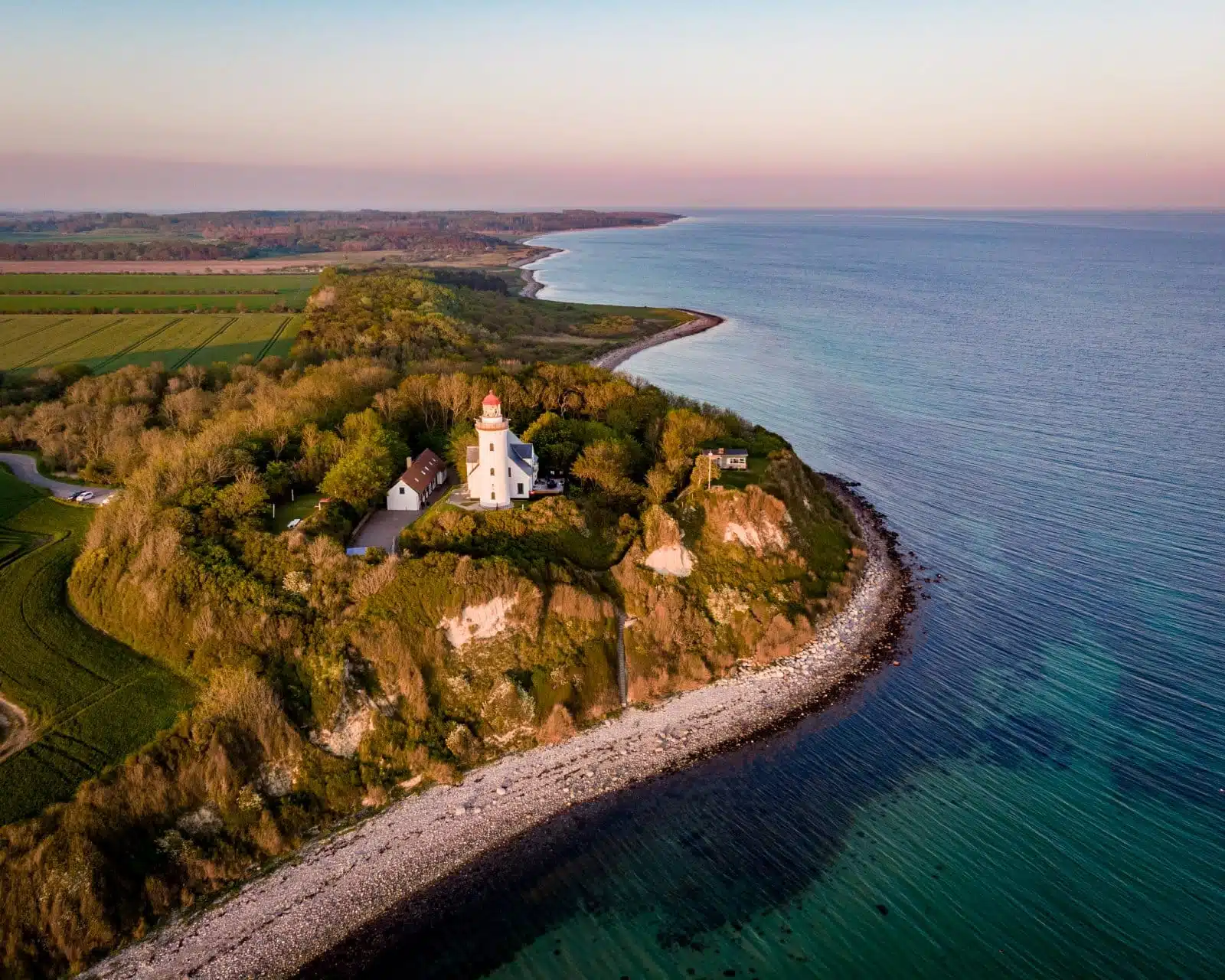
Image Credit: Shutterstock / Rasmus Kleis
Samsø, an island in the Kattegat Sea, is renowned as Denmark’s renewable energy island, achieving carbon-negative status through wind, biomass, and solar power. The island’s sustainable model extends to organic farming, green transportation, and eco-friendly tourism, with opportunities for visitors to learn about renewable energy, enjoy locally sourced meals, and explore the island’s natural and cultural sites by bike or on foot. Samsø’s approach to sustainability is a blueprint for communities worldwide, demonstrating that environmental responsibility and quality of life can go hand in hand.
Insider’s Tip: Participate in a renewable energy tour to see firsthand how Samsø has become a leader in sustainability and renewable energy solutions.
When to Travel: The mild climate of late spring (May to June) and early fall (September) offers the best conditions for exploring the island and participating in outdoor activities.
How to Get There: Samsø is accessible by ferry from Jutland or Zealand. The nearest international airport is in Aarhus, with connections to Samsø by bus and ferry.
The Bottom Line
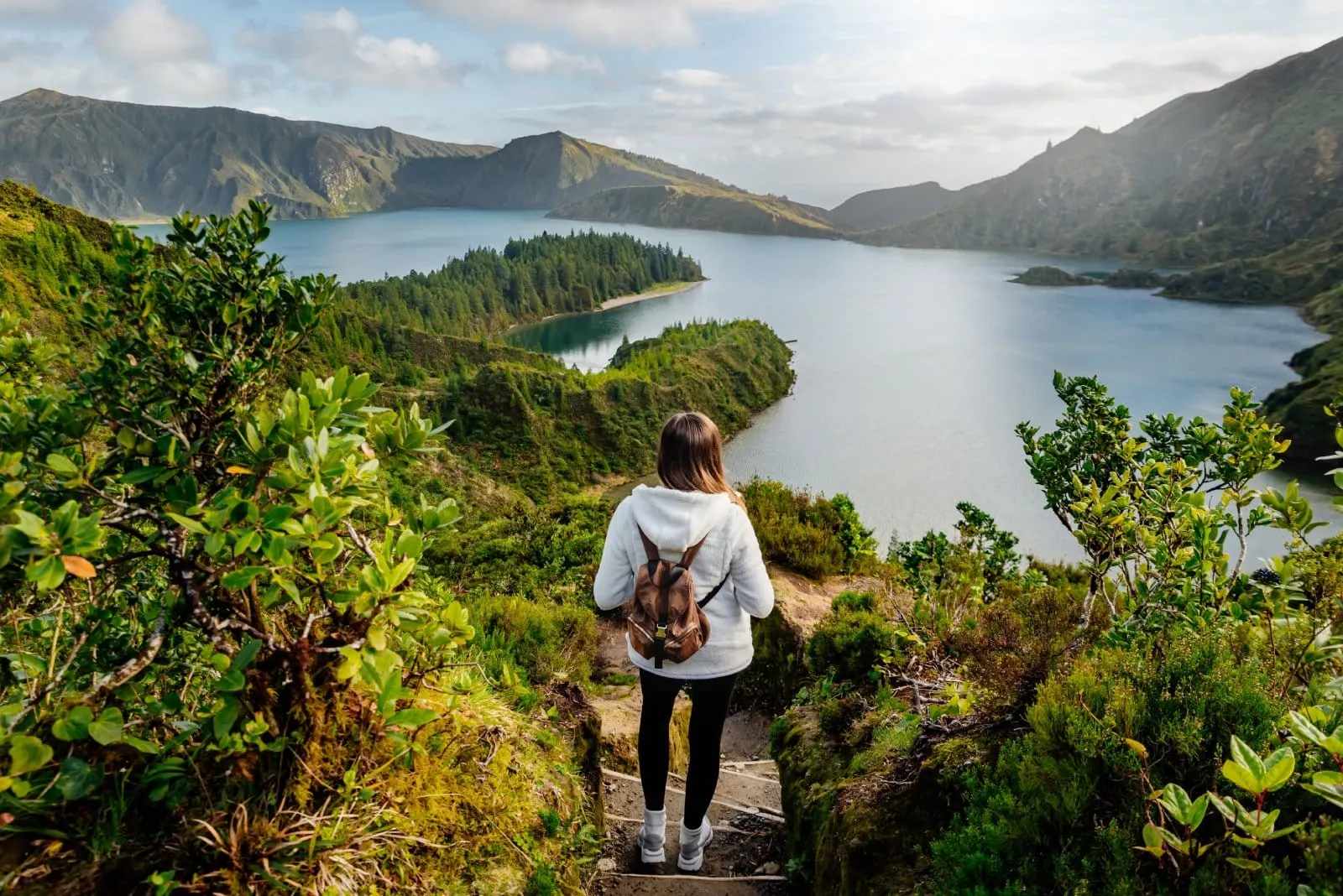
Image Credit: Shutterstock / Damian Lugowski
Exploring sustainable island getaways allows you to immerse yourself in paradise while contributing positively to preserving these unique ecosystems and cultures. From the renewable energy innovations of Samsø to the marine conservation efforts of the Azores, each destination offers a glimpse into a future where travel and sustainability are intertwined. As you embark on your journey to these eco-conscious paradises, remember that your choices as a traveler can support the ongoing efforts to protect and cherish these beautiful islands for future generations. Embrace the spirit of responsible exploration, and let these sustainable island getaways inspire you to be a steward of the planet, wherever your travels may take you.
More From The Green Voyage
Top 10 Trending Travel Destinations 2024
6 Essential Banking Apps for International Travel – Managing Your Finances on the Go
Traveling With Kids – 10 Tips to Create Memorable Family Holidays
The post 10 Sustainable Island Getaways 2024 first appeared on The Green Voyage.
Featured Image Credit: Shutterstock / Maridav.
For transparency, this content was partly developed with AI assistance and carefully curated by an experienced editor to be informative and ensure accuracy.
Tips for Trip Success
Book Your Flight
Find an inexpensive flight by using Kayak, a favorite of ours because it regularly returns less expensive flight options from a variety of airlines.
Book Your Hotel or Special Accommodation
We are big fans of Booking.com. We like their review system and photos. If we want to see more reviews and additional booking options, we go to Expedia.
You Need Travel Insurance!
Good travel insurance means having total peace of mind. Travel insurance protects you when your medical insurance often will not and better than what you get from your credit card. It will provide comprehensive coverage should you need medical treatment or return to the United States, compensation for trip interruption, baggage loss, and other situations.Find the Perfect Insurance Plan for Your Trip
